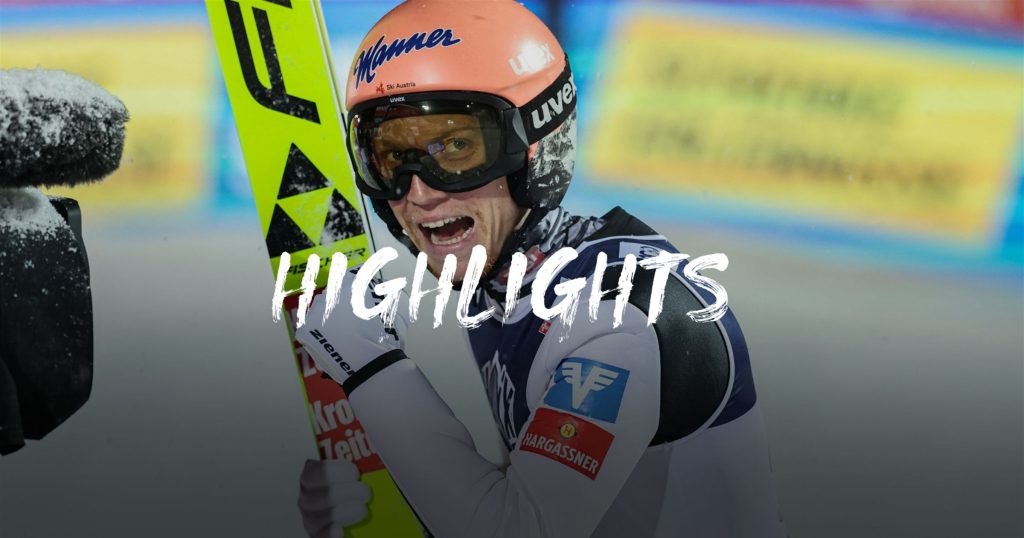The snowy peaks of Engelberg, Switzerland, once again played host to the thrilling spectacle of ski jumping, a sport that combines athletic prowess, aerodynamic finesse, and nerves of steel. The FIS Ski Jumping World Cup returned to this iconic venue, drawing athletes from across the globe to compete on the Gross-Titlis-Schanze, a large hill that demands both power and precision. The competition was fierce, with jumpers vying for crucial points in the overall World Cup standings and aiming to perfect their form in preparation for upcoming major championships. The crisp alpine air crackled with anticipation as each athlete prepared for their flight, the backdrop of the majestic Swiss Alps providing a breathtaking panorama for this display of human flight. The roar of the crowd echoed through the valley as jumpers launched themselves into the void, their brightly colored suits flashing against the white snow, each leap a testament to years of dedicated training and unwavering commitment.
This particular competition in Engelberg saw a dominant performance from the Austrian team, a nation with a rich history and tradition in the sport of ski jumping. Leading the charge was Jan Hoerl, who showcased an impressive display of technical skill and composure throughout the competition. His jumps were characterized by a powerful take-off, a streamlined flight, and a graceful landing, earning him high marks from the judges. He maintained his lead throughout the event, demonstrating consistency and focus under pressure. Hoerl’s victory was a testament to Austria’s continued strength in ski jumping and solidified his position as a force to be reckoned with on the World Cup circuit. His performance was a source of national pride and further fueled the enthusiasm for the sport within Austria.
Adding to the Austrian triumph was a second-place finish by one of Hoerl’s teammates, completing a remarkable 1-2 finish for the nation. This double podium success underscored the depth of talent within the Austrian ski jumping program and highlighted the effectiveness of their training and development systems. The camaraderie and support within the team were evident as they celebrated their shared success. This Austrian dominance in Engelberg echoed their historical prowess in the sport, reaffirming their status as one of the leading nations in ski jumping. The 1-2 finish provided a significant boost to their World Cup campaign and instilled confidence as they looked forward to future competitions.
While the Austrians celebrated their victory, the competition in Engelberg also showcased the talents of ski jumpers from other nations, each vying to challenge the established hierarchy. Athletes from countries with emerging ski jumping programs pushed their limits, gaining valuable experience on the world stage and demonstrating the growing global reach of the sport. The diverse field of competitors highlighted the international nature of ski jumping and the unifying power of sport to bring nations together in a spirit of competition and camaraderie. Each jump, regardless of the final result, represented a personal victory and a contribution to the ongoing evolution of ski jumping as a global sport.
The Engelberg competition also provided valuable insights into the technical aspects of ski jumping, with athletes experimenting with different techniques and equipment in pursuit of marginal gains. The sport is a constant quest for aerodynamic efficiency and optimal body positioning, with jumpers constantly refining their approach, in-flight posture, and landing technique. The competition served as a testing ground for new strategies and provided valuable data for coaches and athletes to analyze and improve upon. The pursuit of perfection in ski jumping is a continuous process, with each competition serving as a stepping stone towards achieving peak performance.
Beyond the sporting achievements, the Engelberg ski jumping competition served as a reminder of the captivating beauty of the sport. The sight of athletes soaring through the air against the backdrop of snow-capped mountains is a spectacle that transcends national boundaries and inspires awe in spectators worldwide. The combination of athleticism, precision, and courage required in ski jumping elevates it beyond mere competition and into the realm of artistry. The Engelberg event reaffirmed the enduring appeal of this unique winter sport and its ability to captivate audiences with its blend of grace and daring. The echoes of the crowd’s cheers and the image of athletes suspended in mid-air against the majestic alpine scenery will undoubtedly linger in the memories of those who witnessed this remarkable display of human flight.














